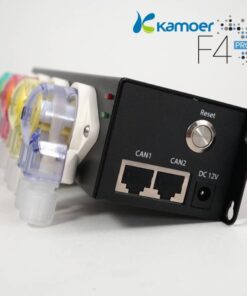RED MANGROVE
Q50.00
Available on backorder
PRODUCT DESCRIPTION
- Creates excellent biogenic microhabitat.
- Size: ~6-8″ (propagule length)
Red mangrove (Rhizophora mangle)
The red mangrove is a true plant that is suitable for most marine aquaria. While it does function as a refugium plant, it is a slow grower and therefore only sequesters nutrients at a modest pace. However, on account of its attractive appearance, it is commonly used as an ornamental. See below for more information.
Size and Care Requirements:
- Max Size: approximately 30′ (tree height)
- Water Parameters: 78-83° F, dKH 8-12, pH 7.0-8.4, sg 1.000-1.024
- Color: Propagule varies from brownish to greenish
- Reef-Safe: Yes
Red Mangrove Species Information
Rhizophora mangle is distributed widely across the tropical and subtropical regions. It prefers fairly well protected, brackish environments such as estuaries and salt marshes. Assemblages of mangrove trees, called mangals, are extremely important both for holding sediments in coastal environments and for sheltering innumerable fish and invertebrate species. Rhizophora mangle can grow either on or in nearly any sort of substrate. As its root system develops, it enriches the refugium habitat. This plant tolerates poor water quality and weak water movement. However, it is adapted to living in full tropical sunlight and so requires powerful artificial lighting when kept indoors. Some natural sunlight (as through a window daily) will greatly benefit this beautiful and unusual plant.
Benefits of Maricultured Red Mangrove Propagules
Aquacultured red mangrove plants are highly preferable to wild-harvested specimens. For example, if cultivated in captivity, they are much better adapted to aquarium life. They are also less likely to carry pests. Even more, aquacultured specimens are better equipped to handle shipping stress. And, by buying captive-bred livestock, you support the aquaculture of marine organisms and help to make our hobby more sustainable!
Adding Red Mangroves to your refugium or display tank helps moderate pH levels, removes nitrates and phosphates from your water column, provides a fantastic home for your copepods, and can be fed to herbivorous fish.
| Red mangrove | 1, 12 |
|---|
Be the first to review “RED MANGROVE” Cancelar respuesta
- Care Level: Moderate
- Temperament: May encroach
- Grow: Slow Growing
- Diet: light, nitrates and phosphates
- Minimum Tank Size: ~
- Origin: Caribbean
- Acclimation Time: Temperature Acclimate
- Reef Safe: Yes
- Coral Safe: Yes
- Invertebrate Safe: Yes
Related products
Macro Element
Bacteria
Macro Element
Macro Element
Macro Element
Algae & Treatments
Macro Element
Dosing Pump















Reviews
There are no reviews yet.